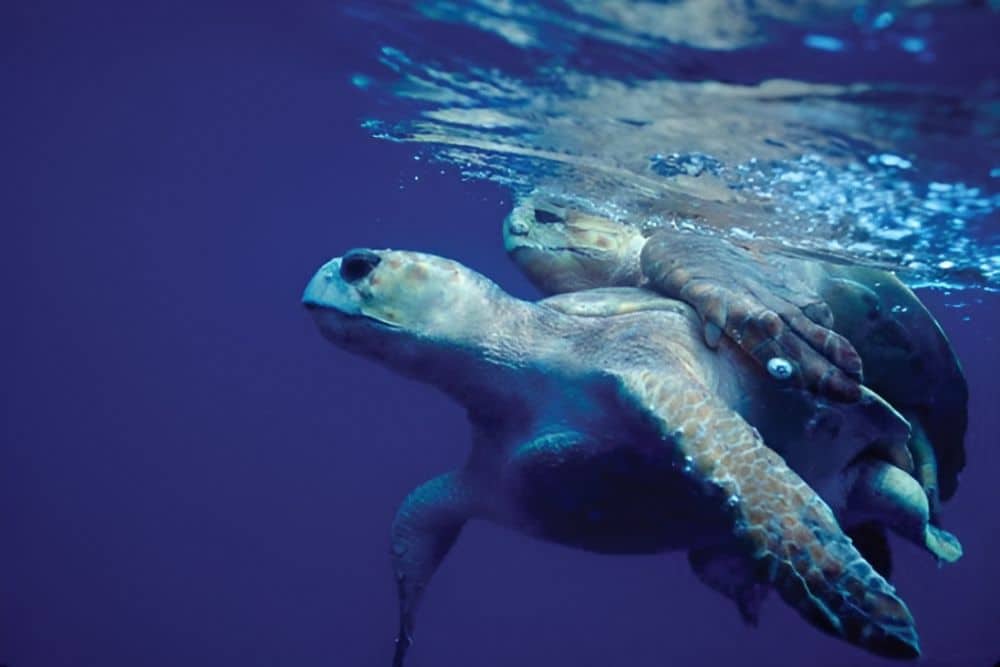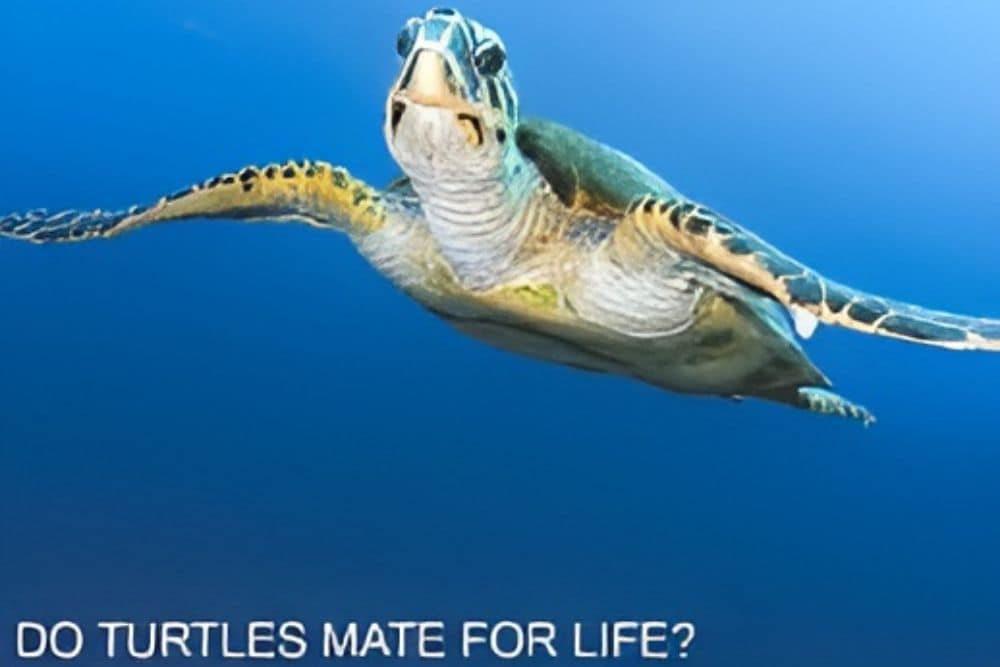How Do Turtles Mate? Reproduction is critical to any species’ survival, and turtles are no exception. Despite their slow movements and seemingly solitary nature, turtles have evolved intricate mating behaviors and reproductive strategies to ensure the continuation of their lineage. From elaborate courtship displays to synchronized nesting migrations, turtles exhibit a range of behaviors that demonstrate the complexities of their life cycle. Understanding how turtles mate and reproduce provides insight into their resilience and longevity and the challenges they face in today’s changing environment.
This guide explores turtle reproductive life, including courtship rituals, mating practices, and nesting habits. It examines how these processes vary among different turtle species and highlights the incredible journeys turtles undertake to bring new life into the world.
Overview of Turtle Mating and Reproductive Process
How Do Turtles Mate? Turtle reproduction generally consists of three main stages: courtship, mating, and nesting. While this sequence is relatively standard across turtle species, the specifics can vary widely, depending on habitat, species, and environmental conditions.
How Do Turtles Mate? Critical Stages of Turtle Reproduction
- Courtship: Turtles engage in unique courtship behaviors to attract a mate, involving tactile, visual, and auditory cues.
- Mating: During mating, the male turtle mounts the female and, in many species, clasps onto her shell to maintain his position.
- Nesting and Egg-Laying: After mating, the female turtle embarks on a journey to find an appropriate nesting site, where she lays her eggs in a carefully constructed nest.
How Do Turtles Mate? While these steps are consistent across turtle species, each type of turtle—be it a sea turtle, freshwater turtle, or tortoise—has evolved specialized behaviors and adaptations to enhance its reproductive success in its respective environments.
Courtship: How Turtles Attract a Mate
Courtship in turtles is often a display of persistence and careful maneuvering, as each species has its way of wooing a potential mate. Here’s how courtship generally works for different types of turtles:
- Sea Turtles
Sea turtles are primarily solitary creatures, but when it comes time to mate, they converge in specific mating grounds. Courtship behaviors include the male turtle nuzzling the female’s head or neck, a gentle display that signals his interest. Some species, like the green sea turtle, engage in a more competitive courtship where multiple males pursue the same female, with the strongest or most persistent male ultimately winning the opportunity to mate.
- Freshwater Turtles
In freshwater turtles, such as the painted turtle or red-eared slider, courtship often involves a unique behavior known as “titillation.” The male swims backward before the female, fluttering his long claws against her face. This behavior seems to be a tactile and visual signal to the female and can last several minutes. How Do Turtles Mate? If the female is receptive, she will remain still, allowing the male to proceed with mating.
- Tortoises
Tortoise courtship can be surprisingly aggressive. Males will engage in head-bobbing, biting, and sometimes even ramming the female’s shell to assert their dominance.How Do Turtles Mate? In some tortoise species, males may also vocalize, making loud grunts or calls as part of their courtship display. After the female accepts the male’s advances, they move forward with mating.
Mating Process: How Turtles Physically Mate

The physical act of mating in turtles is a complex process, often requiring coordination and persistence. How Do Turtles Mate? Here’s a look at how different turtle species mate:
- Mating in Sea Turtles
Mating in sea turtles usually occurs in the open ocean, where both males and females need to maintain buoyancy. How Do Turtles Mate? During mating, the male sea turtle uses the claws on his front flippers to grip the edges of the female’s shell, placing himself on her back. Maintaining this position can be challenging due to ocean currents and the female’s movements. Mating can last several hours, during which the male fertilizes the female’s eggs internally.
- Mating in Freshwater Turtles
How Do Turtles Mate? For freshwater turtles, mating often occurs underwater in rivers, lakes, or ponds. Similar to sea turtles, the male uses his claws to grasp the female’s shell, positioning himself on her back. Because freshwater environments are often calmer, the process is generally more stable. Mating in freshwater turtles typically lasts a few minutes; once fertilization occurs, the male and female go their separate ways.
- Mating in Tortoises
Tortoise mating occurs on land, which allows the male tortoise to mount the female from behind. Due to their bulky shells, tortoises face challenges aligning themselves for mating. How Do Turtles Mate? The male tortoise will often grip the female’s shell for stability, vocalizing during the process. Depending on the species, mating in tortoises can take several minutes to over an hour. He dismounts once the male has finished, and the female can find a nesting site.
Nesting and Egg-Laying: How Turtles Bring New Life into the World
How Do Turtles Mate? After mating, female turtles must find a suitable place to lay their eggs. Each species has specific nesting behaviors, often influenced by environmental factors like temperature, terrain, and safety from predators.
- Sea Turtle Nesting
Sea turtles are famous for their epic journeys from the ocean to sandy shores to lay their eggs. A female sea turtle typically returns to the beach where she was born, guided by the Earth’s magnetic field. Depending on the species, she will use her flippers to dig a hole in the sand, where she lays between 50 and 200 eggs.
- Freshwater Turtle Nesting
Freshwater turtles generally lay their eggs close to the water’s edge but on dry land. The eggs are buried and left to incubate, relying on soil temperature to provide the necessary warmth. In certain species, the temperature of the nest determines the sex of the hatchlings, with warmer nests resulting in females and cooler nests in males.
- Tortoise Nesting
Turtles always lay their eggs in sandy areas. Females may dig multiple test holes before choosing the final nesting spot. Depending on the species, a tortoise may lay between 1 and 15 eggs, which she carefully buries before leaving the nest. Tortoise eggs incubate for several months, and like freshwater turtles, the sex of the offspring may be influenced by the nest’s temperature.
Hatchling Journey: From Egg to the Sea or Land
Turtle hatchlings face an arduous journey from the moment they emerge from their eggs. Here’s how the journey unfolds:

- Sea Turtles
Sea turtle hatchlings emerge from the nest at night, instinctively heading toward the brightest horizon, usually the ocean. This journey is difficult, as hatchlings are vulnerable to predators like birds and crabs. Once they reach the water, they swim tirelessly for several days to reach deeper waters, where they are safer from shore-based predators.
- Freshwater Turtles
How Do Turtles Mate? The freshwater turtle hatchlings emerge from their nest and head towards the nearest water body. While they don’t face the same beach-to-ocean journey as sea turtles, they are still vulnerable to predators as they move toward water. Once in the water, they begin their life as independent individuals.
- Tortoises
Tortoise hatchlings emerge from underground burrows and begin their journey on land, often in arid environments. Unlike aquatic turtles, young tortoises are more self-sufficient and can start foraging for food shortly after hatching.
Unique Reproductive Adaptations in Turtles
How Do Turtles Mate? Turtles possess several unique reproductive adaptations that ensure their success as a species:
- Temperature-Dependent Sex Determination: In many turtle species, the sex of the hatchlings is determined by the nest’s temperature. Higher temperatures typically result in females, while lower temperatures produce males.
- Delayed Fertilization: Some female turtles can store sperm for extended periods, allowing them to fertilize their eggs later, which is beneficial when mating opportunities are infrequent.
- Multiple Clutches: Many turtles lay several eggs during a single nesting season, increasing the likelihood of survival for at least some offspring.
Conservation Challenges for Turtle Reproduction

Turtles face numerous threats that impact their reproductive success, including habitat loss, pollution, and climate change. How Do Turtles Mate? Sea turtles, for example, are particularly vulnerable to beach development, which reduces available nesting sites. Climate change also poses a threat, as shifts in temperature can skew sex ratios, potentially impacting future generations.
Conservation efforts, such as protecting nesting sites, regulating fishing practices, and raising awareness, are crucial in ensuring turtles can continue reproducing and thriving in their natural habitats.
Conclusion
How Do Turtles Mate? The reproductive process of turtles is a remarkable demonstration of their adaptability and resilience. From the elaborate courtship behaviors and unique mating practices to the arduous journeys of nesting and hatching, turtles demonstrate a complex and enduring life cycle that has allowed them to survive for millions of years.
Despite their impressive adaptations, turtles face significant conservation challenges that threaten their reproductive success. How Do Turtles Mate? By understanding the intricacies of turtle mating and reproduction, we can better appreciate these ancient creatures and contribute to efforts to preserve their populations for future generations. Whether gliding through the ocean depths, basking in freshwater habitats, or roaming dry landscapes, turtles inspire awe and admiration as symbols of longevity and survival.
FAQ:
Q: How exactly do turtles mate?
Ans: Turtles mate through internal fertilization, where the male climbs onto the female and uses his tail to transfer sperm into her cloaca. The female then lays fertilized eggs later.
Q: Do turtles mate on their back?
Ans: If the female does not flee, the male attaches himself to the back of the female’s shell by gripping her top shell with claws in his front flippers. He then folds his long tail under her shell to copulate.
Q: Do turtles fight over mates?
Ans: Males may compete with other males to establish dominance in a territory and fight for a mate.
Q: Can two male turtles live together?
Ans: If male turtles of the same species live in close quarters, there may be many fighting. Putting small and huge individuals together can also be exceedingly dangerous. Even if they are of the same species, young and mature individuals should not be kept in the same enclosure.
Q: Do turtles miss each other?
Ans: So, there is no reason to assume that turtles don’t mourn when a buddy they’ve spent a large portion of their life with moves or passes away. And there is a lot of indication, that they do.















Leave a Reply